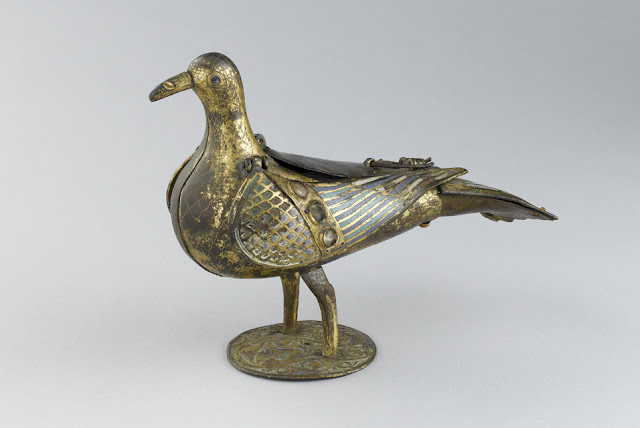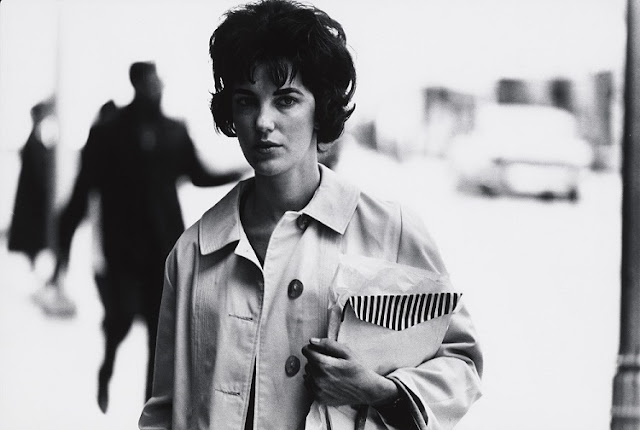Medardo Rosso, Une conversation (A Conversation), 1892-1899. Plaster. 13 3/4 x 26 1/4 x 16 in (35 x 66.5 x 41 cm). Museo Medardo Rosso.
Pulitzer Arts Foundation’s fall exhibition examines the work of Medardo Rosso, a critically important, if under-recognized, artist who played a crucial role in the development of modern sculpture. Medardo Rosso: Experiments in Light and Form explores Rosso’s radical efforts to render sculpture ephemeral and seemingly insubstantial through changing effects of light. It is the largest and most comprehensive Rosso exhibition to be presented in a U.S. museum, with some 30 sculptures—the majority of which have never been seen in this country—as well as about 40 photographs and 30 drawings.
Pulitzer Director Cara Starke says, “From its inception, the Pulitzer has been devoted to presenting experimental, risk-taking work. With his distinctly un-heroic subject matter, his radical process, and his efforts to make sculpture—traditionally the most material of art forms—seem virtually dematerialized, Rosso unquestionably fits that description.
Moreover, we are thrilled to present work that is so sensitive to the effects of light in our building, where abundant and ever-changing natural light and shadow help to shape the experience of the art we show. We are certain that Medardo Rosso: Experiments in Light and Form will be a revelatory experience for our visitors, and we are grateful to the many lenders who have made the exhibition possible.”
Born in Turin, Italy, Medardo Rosso (1858–1928) began his career in Milan, where he first created sculpture that focused on the interactions of surface and light. In 1889, he moved to Paris, where he would remain for the next three decades. It was there, in the milieu of forward-looking artists, critics, and collectors, that he eventually gained critical attention for his efforts to capture fleeting impressions through light and modeling. Rosso tended to return to the same subject over and over, creating versions in plaster, wax, and bronze. His modeling, along with his unusual casting methods, made his works highly receptive to light and shadow. He also experimented with light through photography, manipulating the artificial illumination in his studio, as well as darkroom processes. So intense was Rosso’s focus on light that he once declared that “we are all nothing more than plays of light.”
Rosso’s efforts to “dematerialize” sculpture by incorporating light, combined with his focus on such everyday subjects as street urchins and nursing children, as well as unorthodox ones like bookmakers, helped to expand the definition of sculpture for the modern era. His figures—tired, sick, meditative, laughing, or melancholy—appear to be caught in fugitive states. Intimately scaled “impressions” of modern life, they stand in marked contrast to the monumental, idealized depictions typical of so much traditional sculpture before and during the 19th and early 20th centuries.
Medardo Rosso: Experiments in Light and Form occupies the entire Pulitzer building. While it focuses primarily on the artist’s years in Paris, the exhibition begins with a work created in Milan, Portinaia (Concierge; 1883–84), a head of a woman that visitors encounter as they enter the building. The sculpture marks the point in Rosso’s career when he shifted from an emphasis on realism to impressionistic surfaces that respond to light and atmosphere. Here, as in virtually all of his work from this point forward, the presence of the artist’s hand is recorded in the intensely worked surfaces. This, combined with the small scale of his sculptures, gives the act of looking a keen sense of intimacy. Portinaia is accompanied by a selection of experimental photographs that Rosso made of the sculpture, varying the light conditions, focus, and angles. This gallery also includes Carne altrui (The Flesh of Others; 1883– 84), another subject from Rosso's years in Milan. Here the head of a prostitute appears to emerge from the material of which it’s made—and by which it is partially obscured—perhaps caught in a moment of drowsiness.
Moving to the Pulitzer’s main gallery, with its abundant sunlight and shadow, the exhibition focuses on the impact of natural light on the works. Enfant au soleil (Child in the Sun; 1891–92), for example, reveals Rosso’s interest in how light affects the appearance of the flesh of children. Rosso’s only surviving multi-figure work is also on view in this gallery. Titled Une Conversation (A Conversation;1892–99), it comprises two seated women and a standing man. Despite the title, Rosso did not articulate a face on any of the figures, but left blank ovals of clay where the faces would be; rather, communication is conveyed through the figures’ body language, with the man leaning forward timidly, and the women turning ever so slightly towards him. Displayed adjacent to the Pulitzer’s water court, the sculpture has been animated by the dynamic interplay of light and shadow that emanates through the expansive windows.
In the following, smaller, space the exhibition looks at the theme of mother and child, one of the artist’s signature subjects. Highlights include a bronze cast of Enfant au sein (Child at the Breast; late 1889–90), a commissioned portrait, along with a selection of photographs of the subjects. The version of the sculpture on view omits the mother’s head, placing the focus instead on the nursing child. Moreover, as in works throughout the exhibition, Enfant au sein can only be deciphered from a particular vantage point, where the light and shadow interact to reveal the subject. Viewing thus becomes an active undertaking as we search for the figure in the material.
Moving to the Pulitzer’s lower level, the focus of Medardo Rosso: Experiments in Light and Form turns to artificial illumination. The invention of the incandescent light bulb in the late 19th century had a profound impact on every aspect of life, and it entered into Rosso’s lexicon of light effects, as he reexamined his sculptures under varied conditions of electric light and took enormous care with the lighting conditions in which his finished works were shown. In doing this, he may have been responding to Charles Baudelaire’s 1846 essay “Why Sculpture is Boring,” in which Baudelaire blamed uncontrollable light effects for what he viewed as the inferiority of sculpture to painting.
One of the downstairs galleries features a single work that viewers will be able to illuminate in various ways, changing both the angles and intensity of light falling on the work. In doing so, they will be able to discern the ways in which light affects our perception of sculpture and, it is hoped, gain a tangible understanding of Rosso’s own experiments with both natural and artificial illumination.
Elsewhere, the exhibition displays a range of works that evince Rosso’s preoccupation with artificial light, which he uses not to create bright and clear images, but rather the obverse, to endow his sculpture with a sense of mystery or surprise. The masterpiece Madame X (1896), an enigmatic, barely discernable head of a woman, is accompanied here by a pair of photographs in which the artist shows just a glimpse of the head, seeming to emerge from the frame. Two versions of Malato all’ospedale (Sick Man in the Hospital; 1889) portray a figure slumped in a chair, in an interior that would have been artificially lit. A particularly small work—it measures less than eight inches in height—it compels us to lean close to read the figure, whose condition is conveyed with tenderness and intimacy. Elsewhere, an image of the cabaret singer Yvette Guilbert, who most famously sang at the Moulin Rouge (where she was immortalized by Toulouse-Lautrec), is shown in painted plaster. Here Rosso, who had seen Guilbert perform, clearly intends to evoke the effects of the footlights on her soulful face.
The exhibition’s final gallery focuses primarily on Rosso’s drawings, many of which remained in his possession. Freely executed, largely untitled and undated, they do not appear to be preparatory to his work in sculpture, though like the sculpture, they are small in scale and invite close looking. They depict a broad range of subject matter, from urban life as seen in places like cafés, on public transportation, and in the street, to animal studies, landscapes, and domestic interiors. View of a Boulevard, for example, conjures the dynamism of modern Paris with two figures swiftly crossing paths on a bustling street, while an image drawn on the back of an envelope depicts two women, also in a city, who have paused for quiet moment of conversation. The landscapes are frequently so loosely rendered that they seem to summon rather than depict their subject matter.
Rosso also photographed his drawings, creating a separate body of work through which he revisited the same motif through multiple iterations. One example here, a series of works on paper titled Lionne (Lioness), began with a drawing, which the artist later photographed. He then rephotographed it, printing the resulting image in various sizes and on different papers, in a process that recapitulates the restless experimentation of his sculpture.



